Top 12 Places in Cancun and the Mayan Riviera, Mexico
Got a hankering for some time on a tropical beach? Deep blue sky, turquoise water, gentle waves and soft sand? A styrofoam cooler by your side, packed with sweating Coronas? Yeah, that sounds about right.
You can find nice beaches all over Mexico’s 5,800 miles of seashore, but when you picture paradise, you’re probably thinking of the Mayan Riviera, the 90-mile stretch of Caribbean coastline from Cancun in the north to Tulum in the south (and beyond to Punto Allen, by some estimations).
Cancun, the unofficial capital of the Mayan Riviera, is famous for all-inclusive luxury resorts, with all-day pool parties and all-you-can eat restaurants. Similar though larger resorts are all along the coast too, like fancy communities with private beaches and activities for all ages.
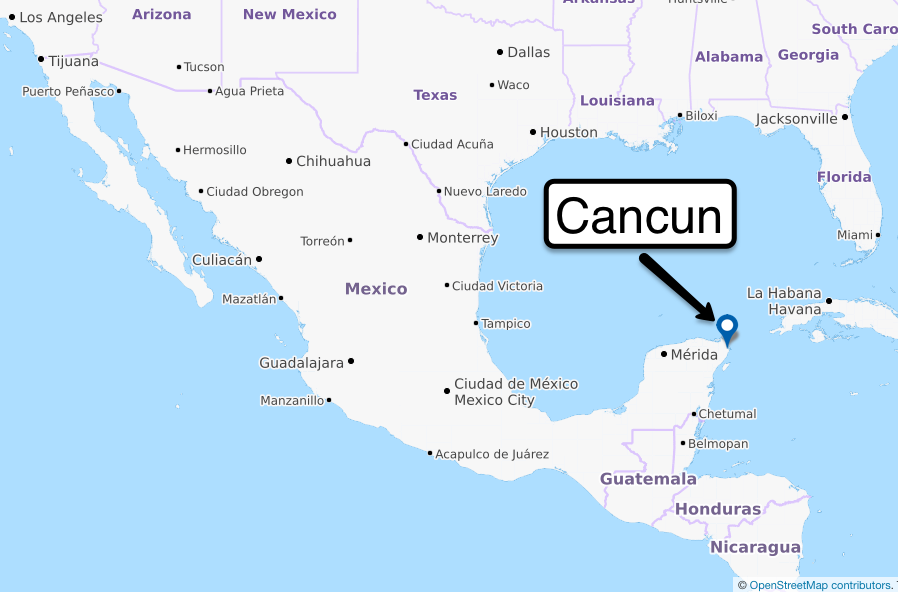
Although the beach might be the big draw in the Mayan Riviera, those who venture out of the resorts (or stay elsewhere) can explore ancient Mayan cities, swim in freshwater cenotes (sinkholes and caves), run through the jungle, or visit charming colonial towns.
It’s easy to use public transportation like buses or colectivos (passenger vans) for much cheaper and with the freedom to spend as much or little time as you want.
Or you could always stay on the beach all day, snorkeling and sipping margaritas. You really can’t go wrong in the Mayan Riviera—with so much to do and see, your trip may be the best long weekend, two weeks, or six months of your life.
This list contains 12 of the best, which of course is totally subjective. (I wanted Top 10, but couldn’t include less than 12. And still I’ve left things out…)
What you consider the best of the Mayan Riviera depends on what you’re into. If you can’t get enough scuba diving or snorkeling, for example, you’ll want to check out Akumal or Isla Mujeres, although you can find great dive sites everywhere, including in cenotes (some of the best diving I’ve done anywhere). The Mesoamerican reef, the second longest in the world, follows the entire coast. Or, in Isla Mujeres, besides the reef you can check out the Underwater Museum of Art, which features more than 500 sunken sculptures.
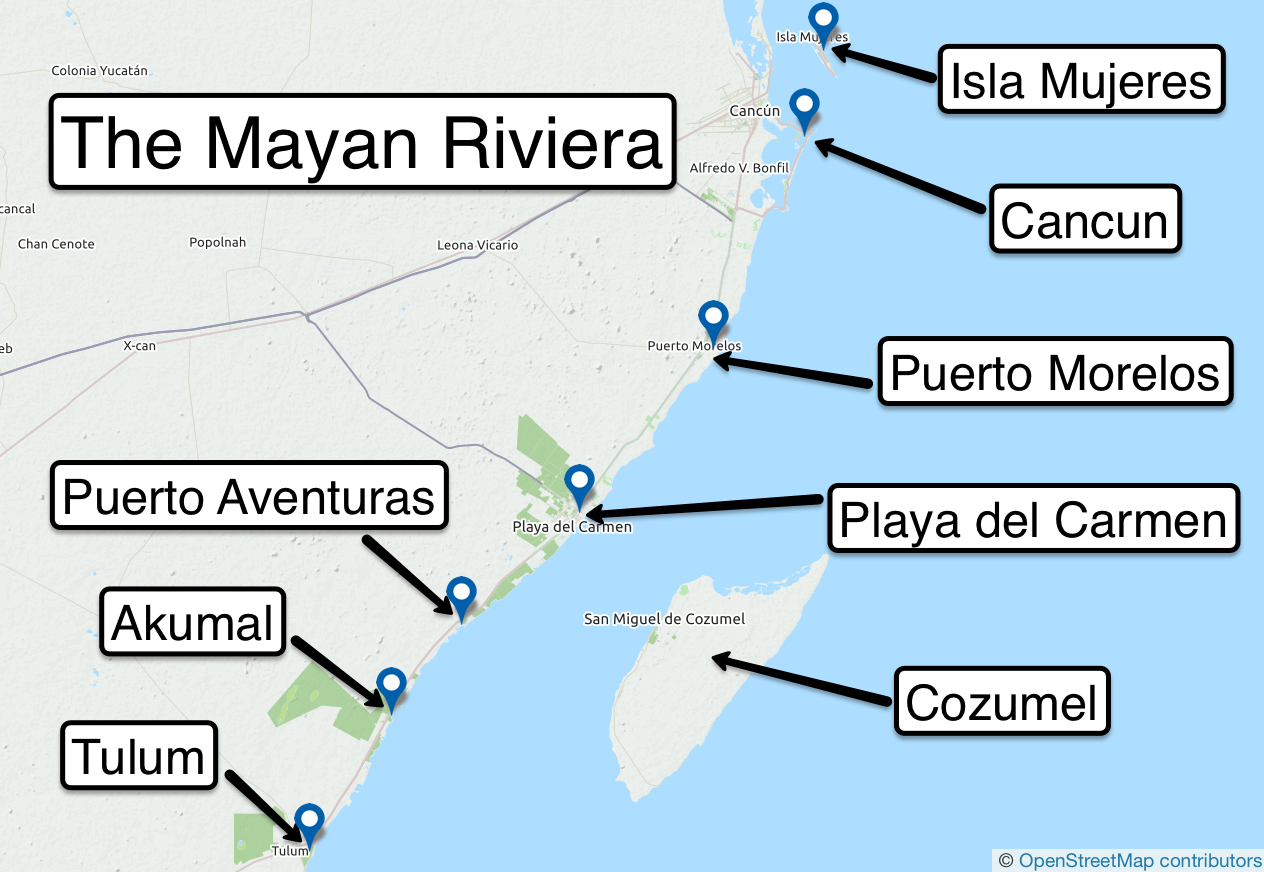
Here are my suggestions to help you plan your trip to the Mayan Riviera, one of safest and most interesting parts of Mexico—maybe the entire world.
By the way, details, directions, and extra suggestions for these places and many more are in my guidebook to Cancun and the Mayan Riviera, available here or at Amazon.com—but if you just have a quick question, I’ll be happy to answer it in the comments.
1. Playa del Carmen
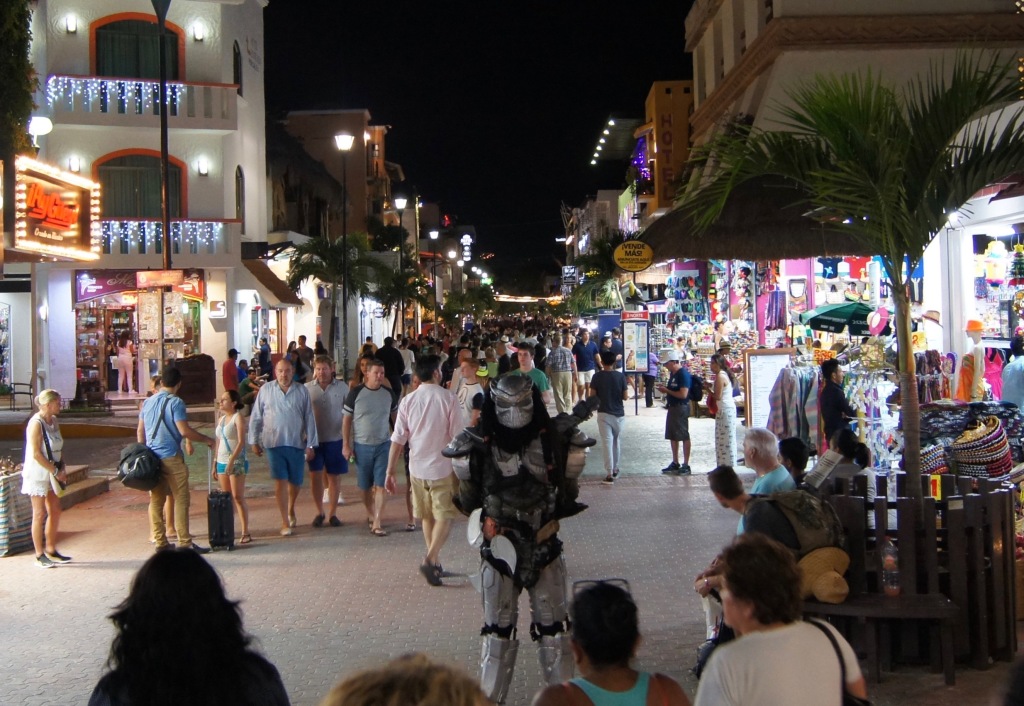
Cancun gets all the hype, and for good reason. Heavily developed, Cancun has plenty to do for all ages, a fun atmosphere, and a big beautiful beach.
But if you’re on a budget and want to walk barefoot from your low-key hotel to the beach every day, then look no further than Playa del Carmen. ADO, the bus from the airport to downtown Cancun, also has a direct bus to Playa.
Due to erosion, the main beach isn’t quite as wide as it used to be, but unlike Cancun with its huge resorts, none of the hotels and restaurants on the beach are taller than five stories. The pedestrian-only street Quinta Avenida (Fifth Ave) follows the beach, with an enormous selection of Mexican and international restaurants, trendy bars, world-class nightclubs, and no fewer than three shopping malls.
There’s nothing like an evening stroll on Quinta Ave, with mariachi groups, smiling hustlers, Mexican families, sunburnt foreigners, and pretty girls dressed for the club all competing for your attention. Although public drinking is not allowed in Mexico, on Quinta Ave no one seems to mind. Grab a beer or two from a convenience store and wander around.
Also, Playa del Carmen’s location roughly in the center of the Mayan Riviera makes it an excellent base for exploring the other places on this list, including the island of Cozumel right offshore. Ferries to Cozumel leave from the southern end of Playa del Carmen’s main beach, a five-minute walk from the central bus station.
If you want to enjoy nature, a short walk to the south of central Playa del Carmen takes you to the Xaman-Ha Bird Sanctuary inside the Playacar gated community. Yes, the entrance fee is a little steep at 300 pesos (about $15 USD), but you can see macaws, parrots, flamingos, iguanas, the cute jungle rodent sereque, and maybe a solitary spider monkey up in the trees.
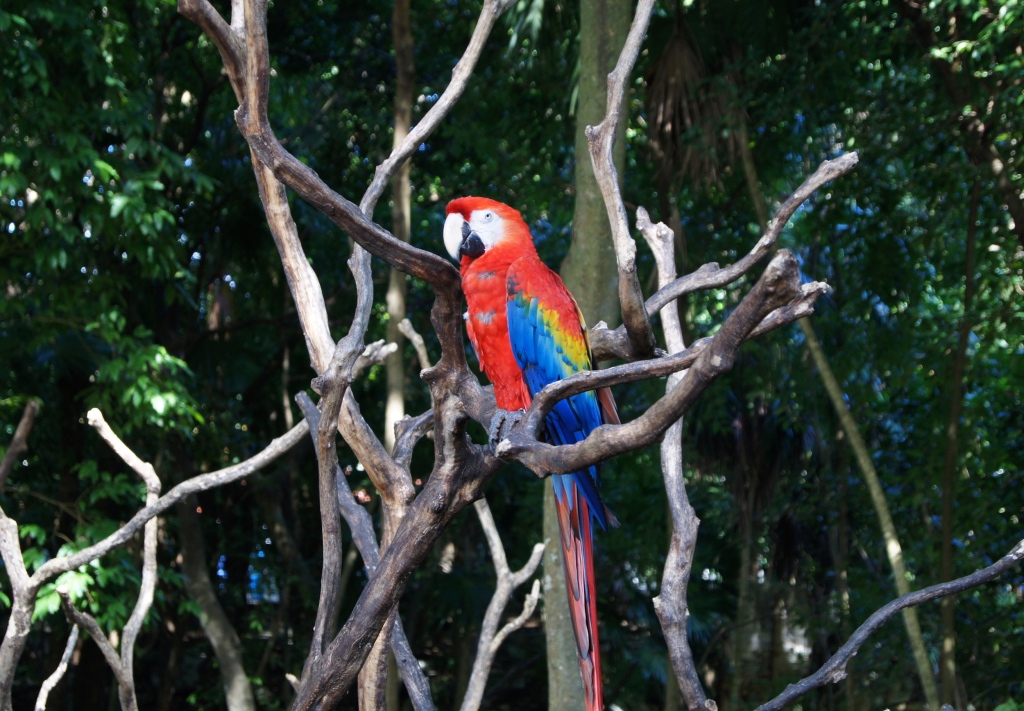
Tip: If you find Playa’s modest beachside hotels and central location appealing, but not its shopping malls and party scene, then look into Puerto Morelos, a relaxed beach town about 30 minutes to the north, which is also a great place for snorkeling and scuba diving.
2. Tulum
Tulum can refer to three distinct places, all near each other: the Mayan ruins, the beach, and the small highway town. The ruins are some of the most beautiful in Mexico, mainly because of their location on cliffs overlooking the sky-blue Caribbean.
Looking for a tour to Tulum? Check out all the activities in this one: Tulum Ruins, Reef Snorkeling, Cenote and Caves tour.
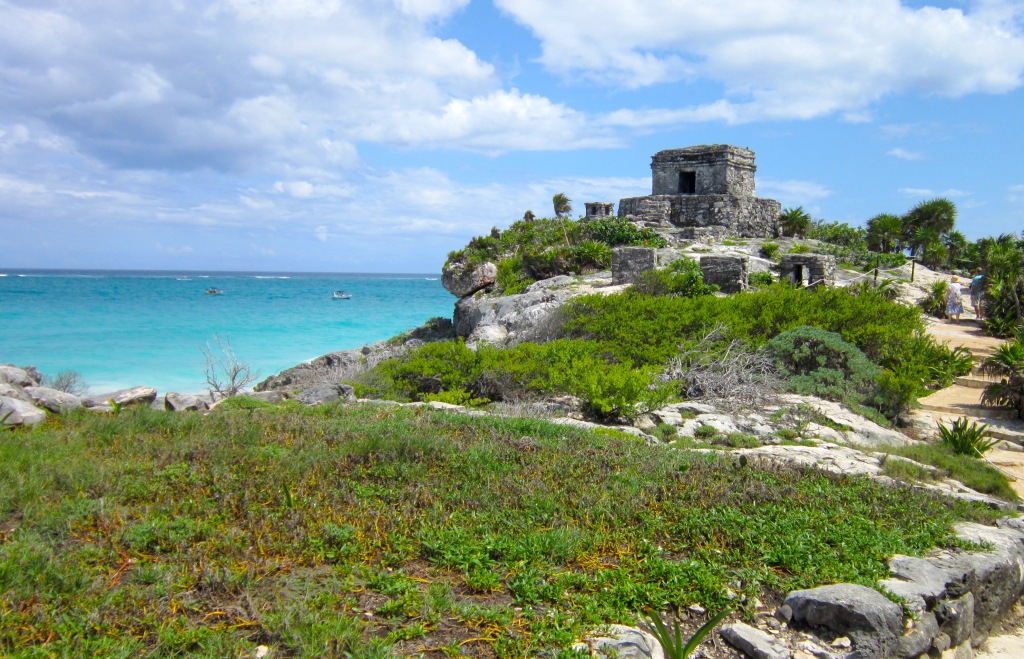
Don’t miss the little beach under the tallest structure, El Castillo (the castle), also known as the lighthouse. Despite its tiny size, it’s one of the most famous beaches in Mexico, routinely appearing on “Top X Best Beaches” lists. Swimming out in the gentle waves, turning around, and looking at the ruins from the water may impress you even more than gazing up at Chichén Itzá’s iconic pyramid.
Tulum the beach (not the little one under the lighthouse) is also considered one of the best in Mexico, with little development and miles of soft sand. It’s an easy walk from the ruins, or a short taxi ride from the town (and highway).
The town is nice too, though a little far from the beach. But you can find discount hotels and fresh Mexican-style seafood, and it’s a good base for exploring places like the ruins of Coba and more cenotes farther inland, or the immense Sian Ka’an Biosphere Reserve to the south.
3. Cenotes
There are no mountains on the Yucatán Peninsula, just a long expanse of porous, sponge-like limestone covered with jungle. A vast network of underground rivers and caves holds fresh water, essential to the inhabitants of the region. Where you have access to this network—a big sinkhole or cavern—you have a cenote, a great place to swim or scuba dive.
Want to try scuba diving in a cenote but don’t have experience (or need a refresher)? Check out this popular cenote tour: Cenote Diving for First-Time Divers and for Refresher Dives in Tulum.
You’ll see visits to cenotes advertised everywhere as part of the big adventure parks with funny names like Xel-Ha and Xcaret. But you don’t need to spend all day or $100 USD to visit a cenote. Smaller, often family-run cenotes are all over the Yucatán, which by some estimates contains more than 6,000 cenotes, some expansive and some little more than a hole in the ground. (Most aren’t developed for tourism, of course.)
Just south of Playa del Carmen is a cluster of four cenote parks across the street from the Barceló resort, which include Cenote Cristiliano, Jardin del Eden Cenotes, and Cenote Azul, all within walking distance of each other with entrances on the highway.
Several good cenote parks are also near Tulum, including Dos Ojos Cenote about 10 minutes north of the ruins and Gran Cenote on the way to Cobá.
Visit in Cenote Dos Ojos and the Mayan ruins of Tulum on this Tulum & Cenote Day Trip.
Because of their low entrance fees (usually 100-200 pesos) and natural jungle settings, these smaller cenote operations are excellent alternatives to the big adventure parks (see #10 below). You can swim in all of them, and most offer scuba diving as well.
4. Isla Mujeres
For a trip to an island that’s much closer to Cancun than Cozumel (just north of the hotel zone) and has world-class beaches within walking distance of the ferry terminal (world-class scuba-diving too), head to Isla Mujeres.
Isla Mujeres (which translates to “Ladies’ Island,” supposedly named for goddess images found there in the 16th century) has spacious beaches and a cool little village on the northern end of the island, with parks, ruins, and beach clubs farther south. It’s a fun and easy day trip from Cancun or even Playa del Carmen, and there are lots of hotels if you want to spend the night. Like Cozumel, it has great snorkeling and dive sites, including the Underwater Museum of Art off the southern point.
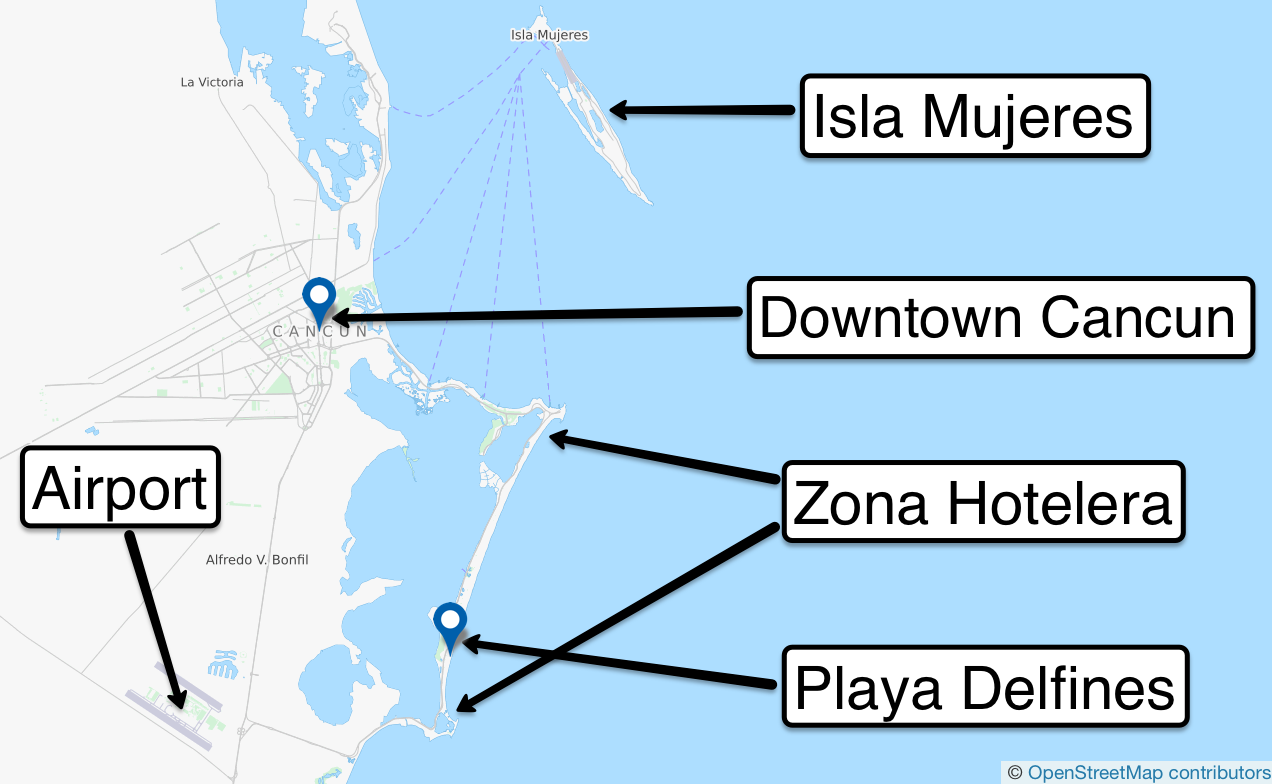
Take a left out of the ferry terminal to get to Playa Sol, the beach facing the mainland, or walk a little farther for Playa Norte on the (you guessed it) north shore of the island, yet another candidate for the best beach in Mexico.
Although ferries to Isla Mujeres do leave from Cancun’s hotel zone, the cheaper and more direct ones leave from Puerto Juárez just north of downtown. It’s a short ride in a taxi or a local bus from downtown Cancun.
5. Chichén Itzá
Technically not on the Mayan Riviera but in the state of Yucatán, Chichén Itzá gained international notice in 2007 when it was chosen as one of the New Seven Wonders of the World. About three hours from Cancun, this massive ancient Mayan city with its pyramids, skull carvings, and two cenotes will give you a taste of the history of the region that you certainly wouldn’t get if you only stayed on the beach.
Chichén Itzá’s most famous structure is the Pyramid of Kukulkán, the blocky, angular pyramid built to represent the Mayan calendar (for example, 91 steps on four sides, or 364, plus the platform, 365). The time of its construction is estimated to be between 650 and 800 AD.
To make the most out of your visit to Chichen Izta, check out this very highly-rated and reasonably-price tour from the Mayan Riviera: Chichen Itza, Cenote and Valladolid All-Inclusive Tour.
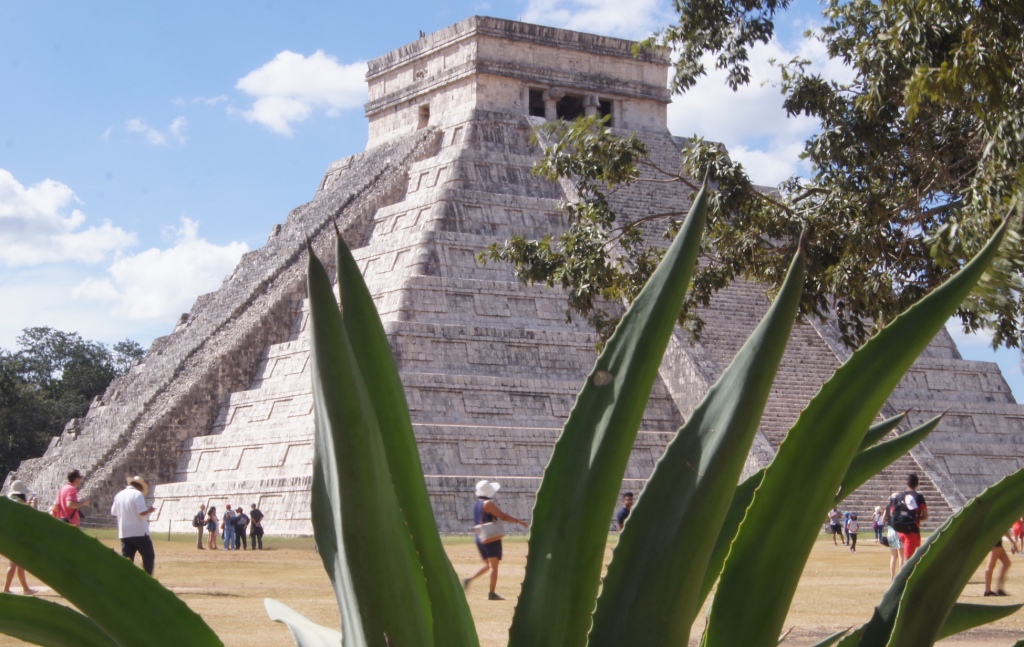
But there’s much more to Chichén Itzá than the main pyramid, and you need hours to get through it. Doing it in a day trip from Cancun is possible, especially if you rent a car, but the best way to see Chichén Itzá is to stay the night before in the pretty small town of Valladolid 40 minutes down the road.
6. Valladolid
Valladolid’s main claim to fame may be its proximity to Chichén Itzá, but its colonial architecture, authentic Mexican market, downtown cenote, 16th-century convent, and beautiful parks make it a great place for a short visit before going to the ruins.
Like nearly every Mexican city, the exact center of Valladolid is the zócalo, or central park (parque central), which is surrounded by hotels, restaurants, bars, banks, government buildings, the cathedral, and the Bazar Municipal food court.
In all directions from the zócalo, Valladolid’s narrow streets have more parks, museums, churches—even a Buddhist temple. The best way to experience Valladolid is to simply wander around.
If you’re not up for too much walking, however, choose one direction: either toward the convent southwest of the zócalo or to the cenote and market to the northeast.
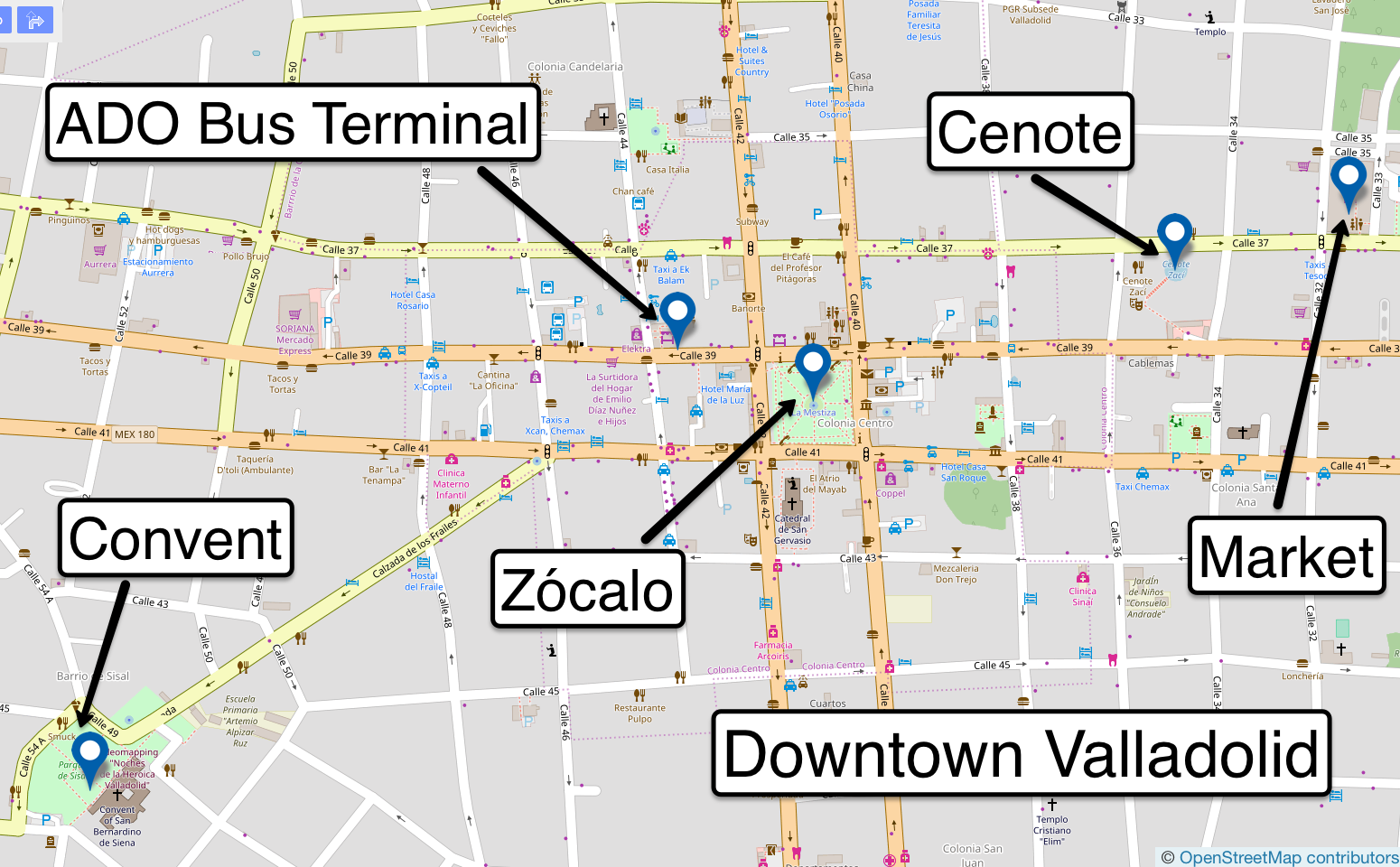
This small town is worlds apart from the beach-going glitz of Cancun and Playa del Carmen. And by staying the night in Valladolid before you go to Chichén Itzá, you can have a head start on all the tour groups swarming the archeological site.
To get to Chichén Itzá from Valladolid, take a colectivo (passenger van) from the lot one block away from the ADO bus station.
7. Punta Venado
Punta Venado is a hidden spot that’s also just south of Playa del Carmen. It has a small, isolated, pretty beach in a bay with a pleasant beach club. Mexican food (especially seafood) at the club is good and with reasonable prices, even for drinks.
But the real draw—at least for me—is its mountain bike park, which has trails for beginners but is definitely for people comfortable on a mountain bike.
The well-maintained yet rugged trails pass through the jungle, with one stretch following the sea. It’s full of animals like iguanas, spider monkeys, coati, and crocodiles. Highly recommended. Check their website for entrance and bike rental fees.
8. Cozumel
On a clear day you can see the hotel skyline of Cozumel from Playa del Carmen. Only 6% of Cozumel is developed—the rest is jungle and beach—and it has an interesting history too. Besides being an important Mayan population center, this was also where Cortés first landed in Mexico before traveling to Veracruz and then inland to the Valley of Mexico to conquer the Aztecs.
See the best of Cozumel underwater with this tour: Cozumel Snorkeling Tour: Palancar, Columbia and El Cielo Reefs
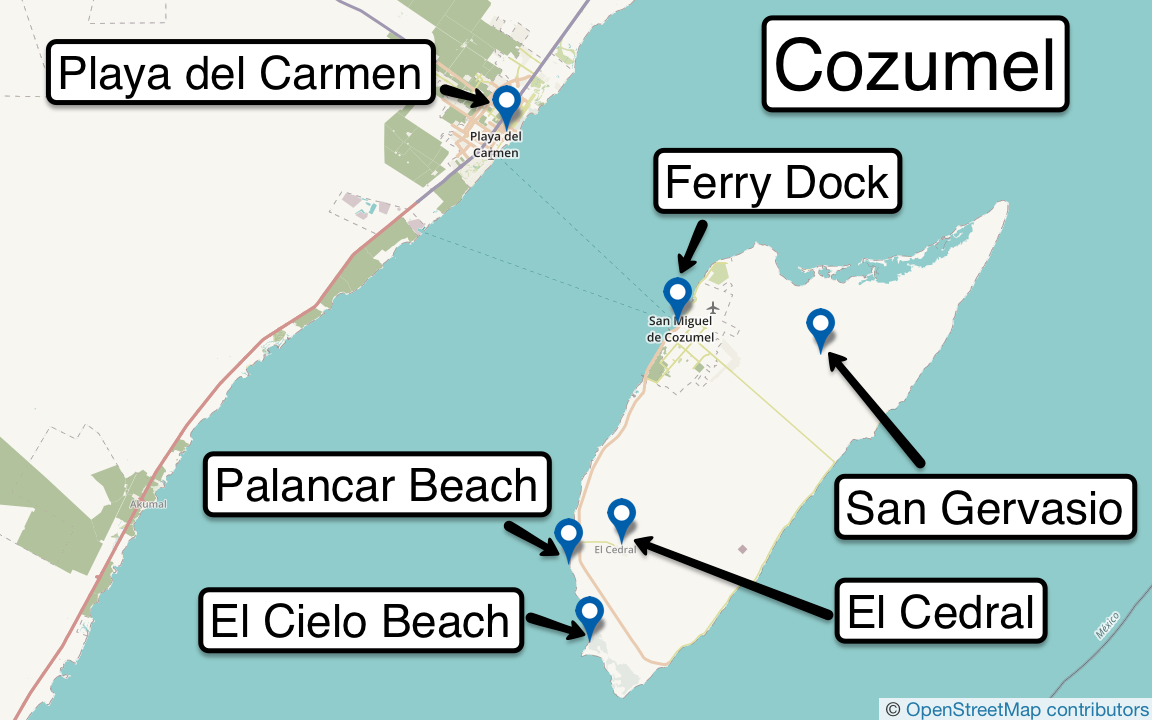
There are excellent dive sites all around the island, so good that Jaques Cousteau called it one of the most spectacular places for scuba diving in the world. If you only want to dive, however, you can visit a Playa del Carmen dive shop first—they arrange dives off Cozumel too.
Cozumel is an easy day trip from Playa del Carmen—just walk to the ferry terminal, buy a ticket, and hop on. Several ferry companies make the trip all day, every day.
The ferry disembarks in the town of San Miguel de Cozumel. Its pretty zócalo (center square) is a straight walk from the ferry dock. All around the zócalo are restaurants and shops, and there are a few banks with international ATMs if you need money.
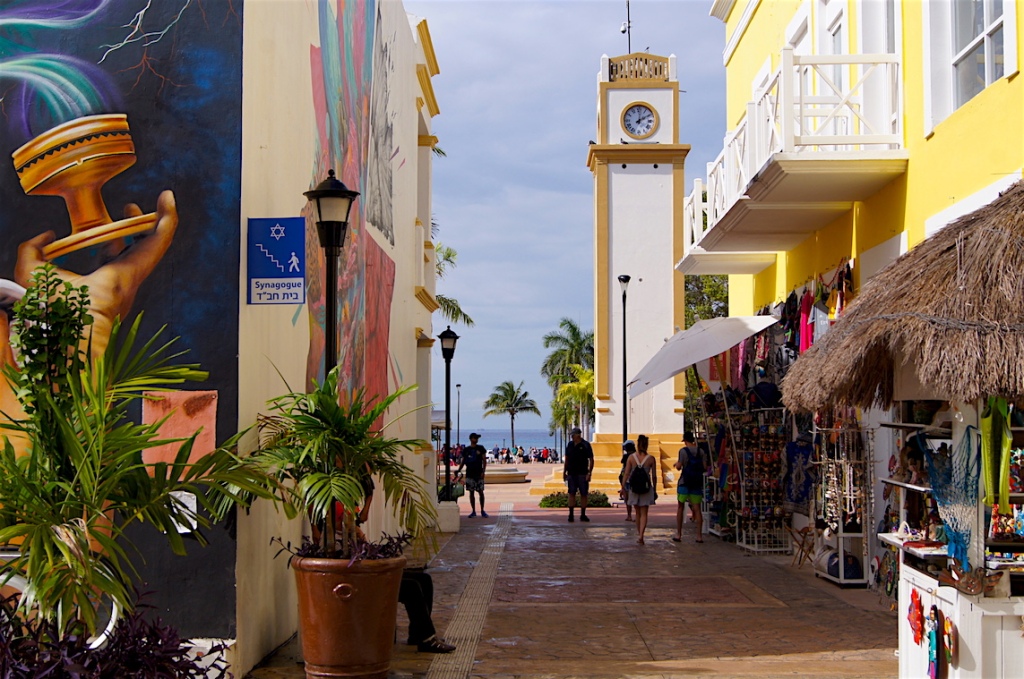
As the ferry arrives, you’ll see the big cruise ship docks to the south. Because of these cruise ships and the thousands of tourists who pour out of them daily, everything in Cozumel is overpriced, especially souvenirs. So, to save money on lunch or a scooter rental, walk outside of the downtown core. Once you get off the pedestrian streets, things get a lot cheaper.
The coastline of San Miguel de Cozumel is a seawall next to the road. It’s nice for a walk, but to go to a beach you’ll need to hire a taxi or rent a car, 4-wheeler, or scooter. Again, you’ll get better prices on all of these the farther you get from the ferry and cruise ship docks—three or four blocks away should suffice.
Most beaches are on the western shore, which faces Playa del Carmen, while much of the eastern shore is a rocky, wild coastline. A fun beach trip is to first go to Playa Palancar near the southern tip of the island. From there you can get a boat to El Cielo, a remote beach with crystal-clear, shallow water.
As if the laid-back town and perfect beaches weren’t enough, there are also several Mayan sites on the island. Two of the biggest are San Gervasio and El Cedral. San Gervasio is up a bumpy dirt road, so if you want to take a rental car there, tell them at the rental office to confirm it’s ok.
9. Cobá
If you can’t get enough Mayan Ruins, then after you’ve explored Tulum and Chichén Itzá, Cobá is the next big ruin complex to check out, where you can rent bicycles to explore the large ancient city deep in the jungle.
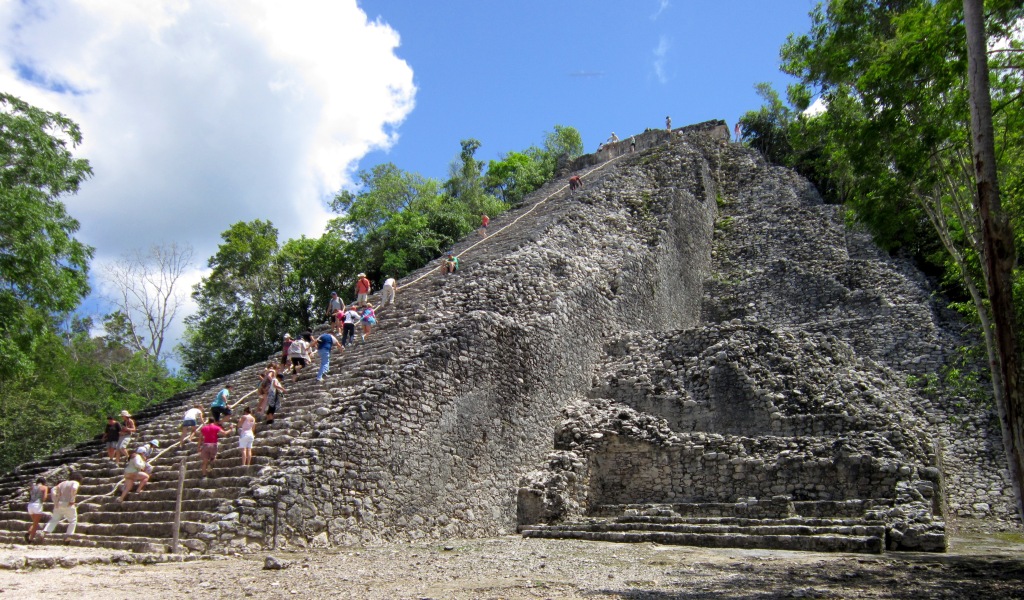
The ruins are an about hour inland from Tulum town, and only one ADO bus from Tulum goes to Cobá and back every day. (Confirm on the ADO website.) Second-class buses are more frequent, but you’ll have to go to the ADO bus terminal in Tulum town to ask for the schedule. Try to leave early and come back late—Cobá is big.
Getting to Coba can be difficult, so to do it in a tour (and visit other places too), check out this popular and highly-rated tour: Cobá, Cenote, Tulum and Playa del Carmen Tour
10. Xpu-Ha Beach
Beach after beach line the Mayan Riviera, with many occupied by big resorts. Although Mexican law states that all waterfront is public land, if there’s no public access point, then essentially the beach is private. If there’s a specific resort you want to check out, take a look at their website to see if they offer day passes.
Hidden between the resorts, the public beaches on the Mayan Riviera are much less developed and more laid-back than Playa del Carmen and of course Cancun. Good ones include Tulum, Puerto Morelos, Akumal (especially for snorkeling), Xcacal, and Maroma. Also, if you have a rental car or don’t mind paying for a taxi, just north of downtown Cancun is Isla Blanca, a long, undeveloped, isolated peninsula surrounded by beautiful clear water.
For a long beach with a central location and little development, you can’t go wrong with Xpu-Ha, south of Playa del Carmen. You can get there on public transportation—get off on the highway and walk up the sandy road. There’s a convenience store and a restaurant or two on the beach, but little else, making for a great escape from pool parties and daytime club music.
11. Big Adventure Ecoparks
You can’t miss the names: Xel-Ha, Xcaret, Xplor. From the moment you land at the Cancun airport, you’ll see them everywhere, rivaling the nightclub Coco Bongo in ubiquitous promotion. They’re also favorites of the guide/hustlers on Quinta Avenida in Playa del Carmen.
These places are big nature parks built around cenotes and beaches that have adventure activities and include all your food and drinks. Never buy from anyone selling them on the street, but buy tickets in advance online for the best prices (click the following links).
Three of the most famous ecoparks are just south of Playa del Carmen: Xcaret, Xplor, and Rio Secreto.
Xcaret is the largest of these and has Mayan ruins, dolphin shows, and an emphasis on culture.
Xel-Ha is described as an humongous natural aquarium. It’s closer to Tulum than the others.
Xplor is more about adventure activities — it has an underground river and a big zipline tower that you can see from the highway.
While the three major ecoparks that begin with “X” all have nature and water activities, perhaps you could say that Xplor is more about adrenaline, Xcaret is more about culture, and Xel-Ha is more family-oriented.
Across the street from Xplor is Rio Secreto, which is more than a cenote, but a tour through one mile of an underground river. Unlike smaller cenotes where you can just show up, for Rio Secreto you should make reservations on their website. Or you can buy a skip-the-line ticket here.
By the way—elsewhere in Mexico, “x” is usually pronounced like an “h”, as in México (ME-hee-co). But in the Mayan Riviera, it’s usually pronounced like “sh”, as in Xel-Ha (SHELL-ha), Xpu-Ha (SHPOO-ha), and many more. But there are exceptions—Xplor, for example, is pronounced how you’d expect (explore).
12. Playa Delphines in Cancun’s hotel zone
Perhaps you have noticed that nothing on this list is actually in Cancun! Don’t get me wrong—Cancun is a wonderful place, though it’s not exactly the best spot to appreciate nature or experience culture. In fact, if you don’t stay in a resort in Cancun, then you may not even go there, except for the airport of course.
Some geography: the Cancun known to travelers is a long, thin island full of big resorts, shopping malls, marinas, restaurants, and nightclubs. Called the Zona Hotelera (hotel zone), this is what people are talking about when they talk about Cancun.
Downtown Cancun is on the mainland, and despite the tourist industry is a typical working-class Mexican city. You can find good budget hotels and restaurants there, along with some interesting markets and city parks.
If you’re not staying in a huge resort in Cancun’s hotel zone but still want to spend some time on the famous beach, go to Playa Delphines (Dolphin Beach) about halfway down the island. There’s plenty of space, good swimming, and if you get there early enough you might find a shady spot under a wood-and-palm-frond shelter.
For some exploring, just across the road is El Rey, the largest archeological site in Cancun. Although not a giant city like inland Chichén Itzá or a stunning seaside photo opportunity like Tulum, it’s a great place for an afternoon stroll among the limestone structures and sunbathing iguanas.
And if you can’t get enough of all things Mayan, head north to Cancun’s Mayan Museum, which features the San Miguelito ruins, another small Mayan site reached by walking through the jungle.
As I wrote above, there’s much more in the Mayan Riviera than these 12 places. But perhaps the best thing of all is to just slow down and take your time. Swim all day, spend a few hours walking Quinta Avenida in Playa del Carmen, or take a seat under a pyramid to contemplate a civilization that’s long gone, as groups of tourists hustle past, trying to get in one more photo before they are rushed away to the next preplanned destination.
After all, even though there’s so much to do in Cancun and the Mayan Riviera, remember—it’s a vacation! And it’s Mexico! Take it easy.
And for more places to see, insider tips, and hotel, restaurant, and transportation suggestions, please take a look at my guidebook. Thanks, and happy travels.
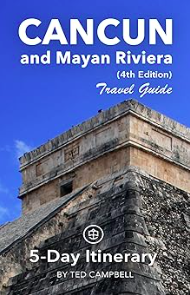
This page contains affiliate links, which means I earn a small commission if you purchase something after clicking a link on this site. I receive this commission at no additional cost to you.
Posted on July 9, 2023, in Mayan Ruins, Mexico, Travel in Mexico and tagged akumal, cancun, chichen itza, coba, Cozumel, isla mujeres, mayan riviera, playa del carmen, tulum, valladolid. Bookmark the permalink. 10 Comments.
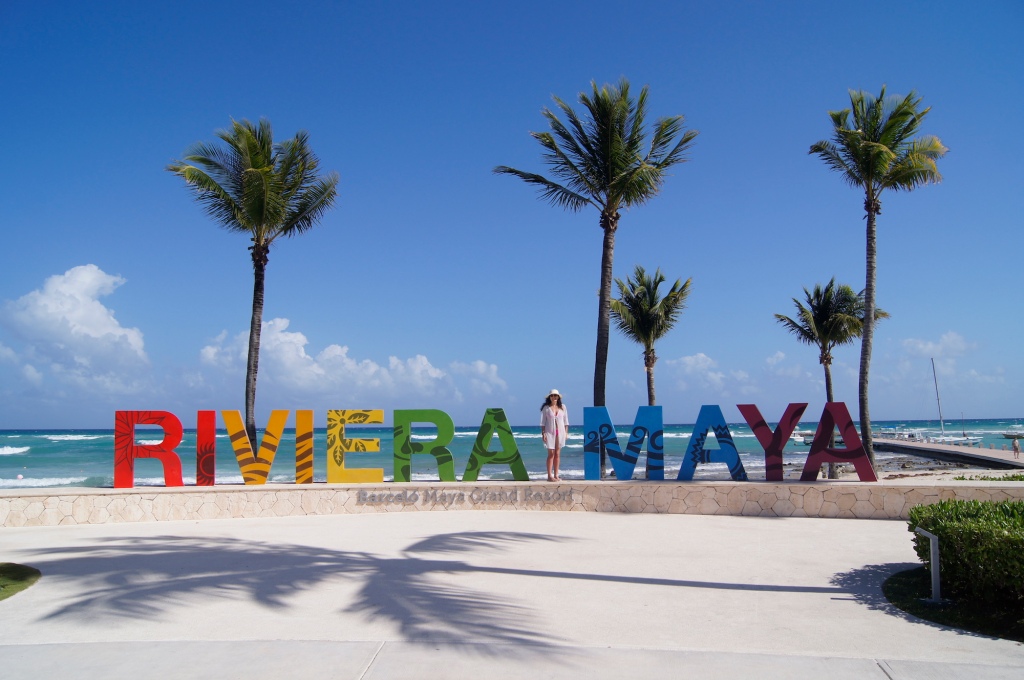


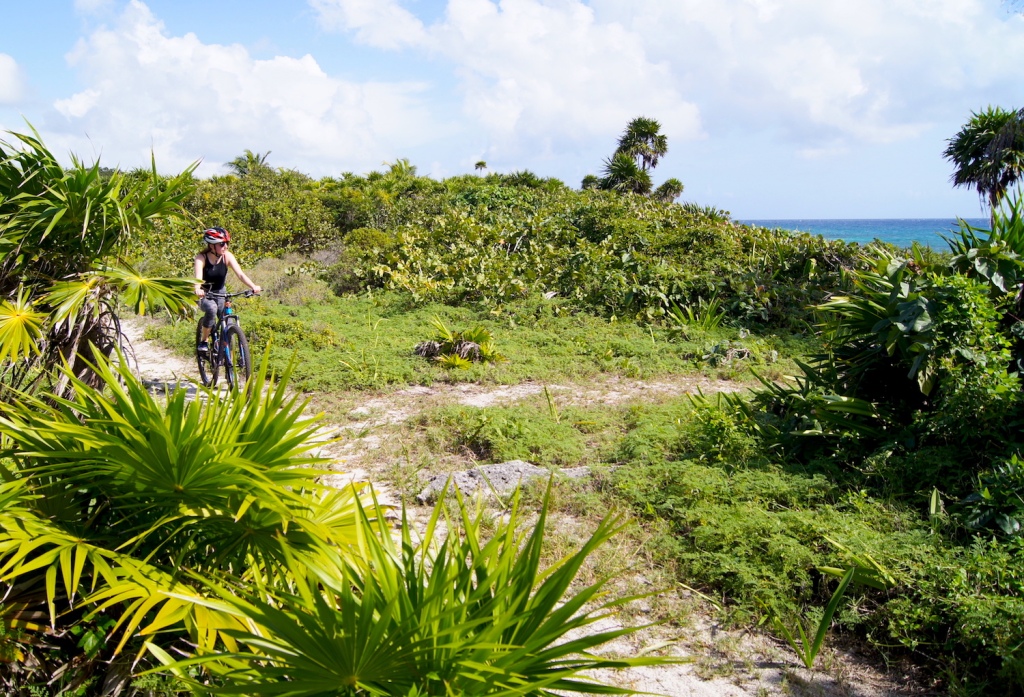
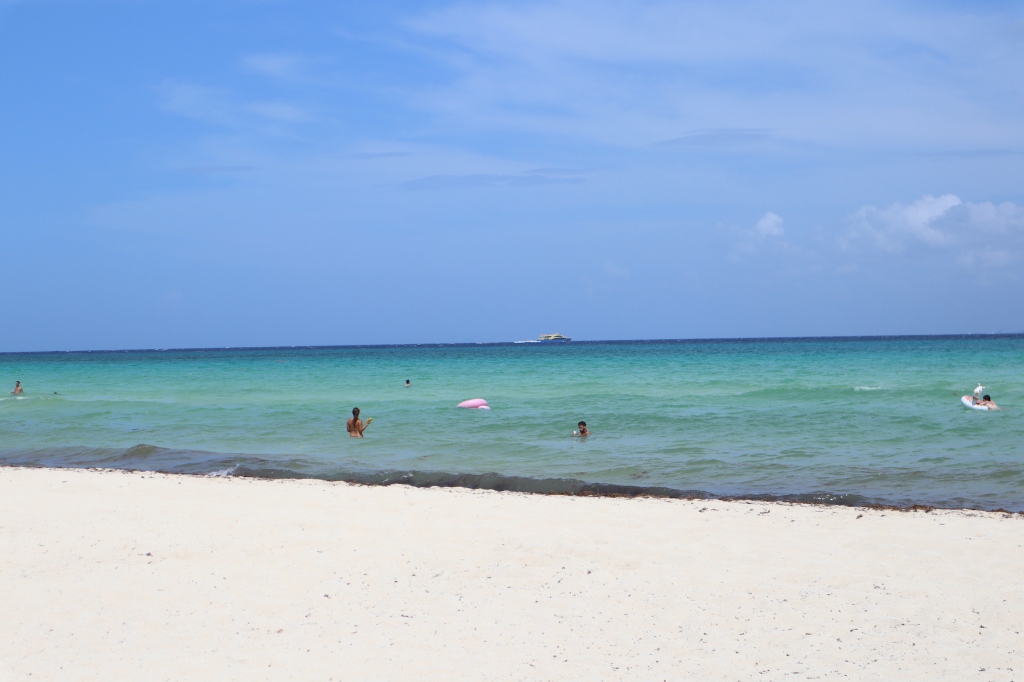
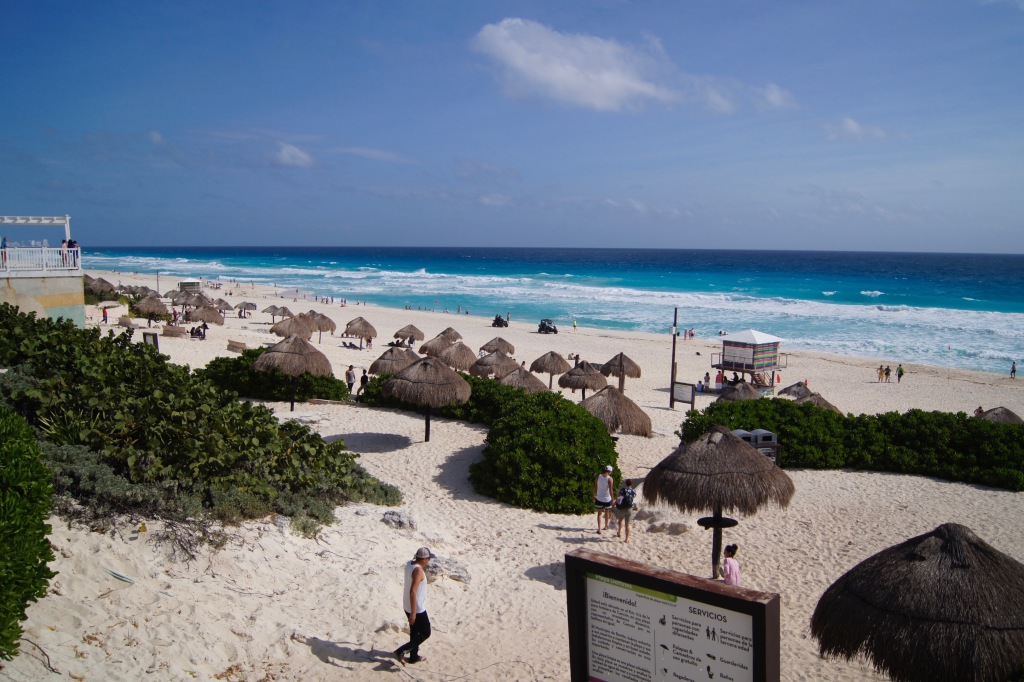


Reblogged this on My Heart of Mexico and commented:
If you’re planning a trip to Mexico, this is a must-read!
LikeLike
Pingback: Scuba Diving in the Cenotes of the Mayan Riviera | No Hay Bronca
Pingback: Destination Events in the Mayan Riviera, 2019 | No Hay Bronca
Pingback: With so many places to visit in Mexico, where should you go? | No Hay Bronca
Pingback: New Editions of My Guidebooks to Cancun/Mayan Riviera and Chiapas | No Hay Bronca
Pingback: 15 Money-Saving Tips for Cancun and the Mayan Riviera | No Hay Bronca
Pingback: My Top Tips for Travelers to Mexico | No Hay Bronca
Pingback: Now Really, Is Mexico Safe or Not? | No Hay Bronca
Pingback: 8 Tips for Visiting the Mayan Ruins of Chichen Itza | No Hay Bronca
Pingback: 5 Days in Cancun on a budget – What to do? | No Hay Bronca